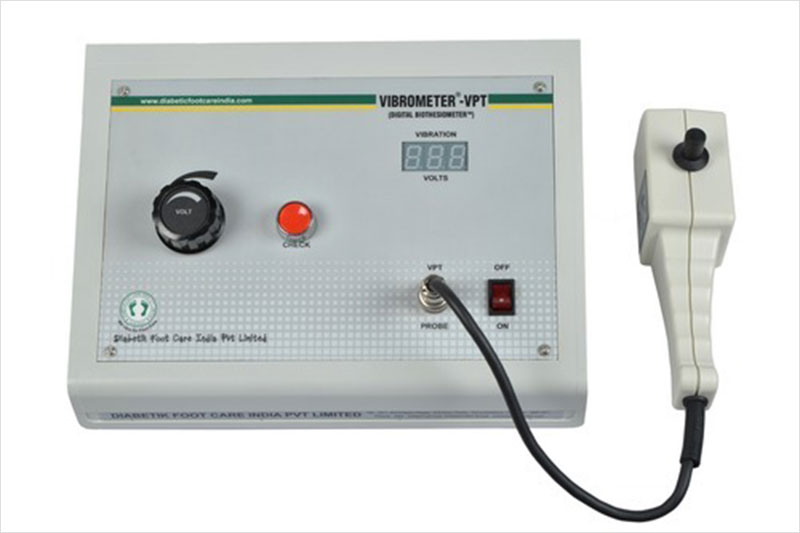Understanding the importance of Biothesiometer Testing for Diabetes
Share this Post to earn Money ( Upto ₹100 per 1000 Views )

Diabetic neuropathy, a common complication of diabetes, can lead to nerve damage and sensory loss, particularly in the feet. Early detection and management of neuropathy are essential to prevent further complications, such as foot ulcers and amputations. At World Diabetec Centre, we offer advanced diagnostic tests, including the biothesiometer test, to assess nerve function and detect diabetic neuropathy at its earliest stages. Let's explore the significance of biothesiometer testing in diabetic neuropathy care:
What is a Biothesiometer Test?
A Biothesiometer is a handheld device used to measure vibratory perception threshold (VPT), which refers to the ability to feel vibrations on the skin. During the test, the Biothesiometer delivers controlled vibrations to specific points on the foot, and the patient indicates when they first feel the vibration. The results are recorded as a vibration perception threshold, with higher thresholds indicating decreased sensitivity to vibrations and potential nerve damage.
Importance of Biothesiometer Testing in Diabetic Neuropathy:
-
Early Detection of Neuropathy: Diabetic Neuropathy often develops gradually, with symptoms becoming apparent only after significant nerve damage has occurred. Biothesiometer testing allows for early detection of neuropathy by identifying subtle changes in vibration perception threshold before symptoms manifest clinically. Early intervention can help prevent further nerve damage and complications.
-
Objective Assessment: Unlike subjective assessments of neuropathy symptoms, such as tingling or numbness, biothesiometer testing provides an objective measure of nerve function. This quantitative assessment allows healthcare providers to track changes in VPT over time and monitor the progression of neuropathy more accurately.
-
Risk Stratification: Biothesiometer testing helps stratify patients based on their risk of developing diabetic foot complications. Individuals with elevated VPTs are at higher risk of foot ulcers, infections, and lower extremity amputations. Identifying high-risk patients early allows for targeted interventions to mitigate these risks and prevent adverse outcomes.
-
Guiding Treatment Decisions: The results of Biothesiometer Testing inform treatment decisions for patients with diabetic neuropathy. Individuals with impaired vibration perception may benefit from interventions such as foot care education, protective footwear, and regular foot examinations to prevent injuries and promote foot health.
-
Monitoring Disease Progression: Biothesiometer testing is useful for monitoring the progression of diabetic neuropathy and assessing the effectiveness of treatment interventions. Regular testing enables healthcare providers to identify changes in VPT over time and adjust treatment plans accordingly to optimize outcomes.
-
Conclusion:
In conclusion, biothesiometer testing is a valuable tool for diagnosing and monitoring Diabetic Neuropathy at World Diabetec Centre. By providing early detection of neuropathy, objective assessment of nerve function, risk stratification, guidance for treatment decisions, and monitoring of disease progression, biothesiometer testing plays a crucial role in optimizing the management of diabetic neuropathy and preventing associated complications. Individuals with diabetes are encouraged to undergo regular biothesiometer testing as part of their comprehensive diabetic care at World Diabetec Centre.Click to learn more https://www.worlddiabetescentre.com/publicsite?pid=aditiclinic&page=Biothesiometer








